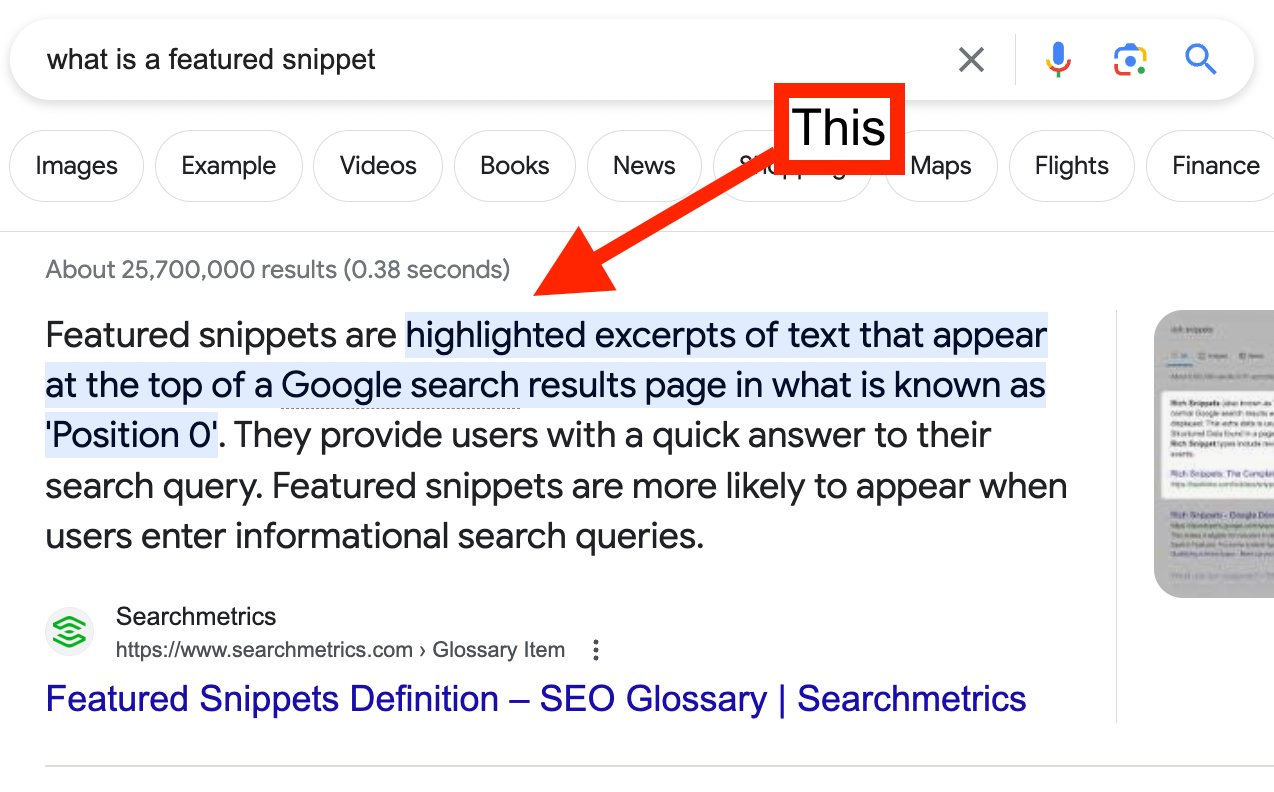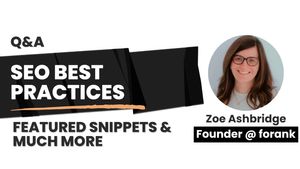I was so excited to welcome fellow Brit, Zoe Ashbridge, to the community today.
In the podcast, we throw questions back and forth, discussing best practices around these four topics:
- How to write content that targets a specific keyword
- How to win featured snippets
- How to win HARO links
- How to work efficiently with freelancers (from briefs to workflows)
In the newsletter this week, I’ll round up some of our advice on 1 and 2 (and I’ll let you dive into the conversation with Zoe to hear the rest.)
1. How do I target a specific keyword? What goes on the page?
Zoe starts out with a quote from Louis Smith that I loved:
“A keyword is a gateway to a topic”.—Louis Smith
She reiterates that a keyword is not an isolated phrase on its own. Each keyword should be seen as part of a whole topic, targeted by several pages that collectively show your authority and expertise. (Shoutout: topical authority)
But, let's focus on an individual page for a moment. How do we build a page that targets and wins a keyword?
Zoe recommends starting off by Googling your keyword and seeing what you find.
What do the "blue links" look like?
Is it 6-8 service pages?
Is it 6-8 blog posts?
This is your first indicator of what search users are looking for (and what Google is choosing to show them).
To win your keyword, you should listen to the formats and structures you see there (e.g. is it a listicle?). But, you shouldn’t create copycat content.
Content formats aren't everything. It's not what makes your piece unique. You still need to stand out.
So, pull up the top 6 articles that are currently ranking for your keyword and see what they’re writing.
Craft a content brief using these steps:
- Note down every subheading
- Make a content outline that is complete and exhaustive
- Don’t ‘copy’ headings that aren’t descriptive, well-optimized, or fitting to your brand
- Take the content a step further. What would make your piece of content the best piece of content on the internet? Better than the top 6?
- Get it written
Next, we come back to the idea that a keyword is a gateway to the topic.
Your final step: figure out what other content you need to have on your site to build your authority on this topic.
In my newsletter recently, I encouraged you to build reader-centric topical authority.
So, instead of listing and tackling all the matching keywords, think through the user journey.
- What other topics are useful to this reader?
- What are they trying to achieve, what other questions might they have?
- What's "next" after they've read this article?
If the reader heads back to the search results and continues to find your site, being helpful across the breadth of the topic. Guess what?
They remember you. They appreciate you. They take time to learn what you offer.
2. How to Win Featured Snippets
Our next topic of conversation was featured snippets and how to win them. Let's start from the top:
What is a Featured Snippet?
They’re what we call “rank zero”. They take up the most space and look more desirable to click.

They tend to appear for top-of-funnel content, not really “ready to convert” searches. But that means they’re really good for traffic campaigns, and suit a wider strategy that includes retargeting and capturing emails.
They're SO powerful if you win them.
Low authority sites can jump from page 2 to top of page 1 by targeting a featured snippet. And the conversion rate is significantly higher than other results.
Types of featured snippets include elements like lists, tables, images, videos, tables. I’ll explain how to find them a little later.
How to win a Featured Snippet
“It kinda goes back to being the most useful article on Google.” - Zoe Ashbridge
The first step to winning a featured snippet is to identify the opportunity exists in the first place.
That's easy to do with a tool like Ahrefs (or probably whatever you're using).
Take a look at all the keywords you currently rank for. Then filter by “Featured Snippet”.
This shows the keywords you're ranking for where a Featured Snippet is available to win.
Let's take an example from the How the F*ck website. One of the keywords I rank for that has a snippet opportunity is “low funnel keywords”.
When I Google this keyword, I see the snippet:
This is a “paragraph” type featured snippet.
To try and win it, first, let’s analyze its characteristics:
- It’s 38 words.
- It’s a definition.
- It starts with the keyword.
- “Buy”, “sale”, “cheap”, “hire” are highlighted.
Furthermore, if we find this snippet in the actual article, an assessment of its surroundings shows it sits directly under the heading “What are lower or bottom funnel keywords?”.
Notably, it’s also the first paragraph in the overall article.
All these things are really important to know. They indicate what it might take for you to win this snippet.
My article on lower funnel keywords doesn’t win the snippet. But, it doesn’t have headings with the right keywords, it doesn’t define them in 38 words. Mine is currently 100% human-focused, it's not optimized for Google.
So, let's update it together.
Here's my original introduction paragraph:
Here's my reoptimized introduction:
Note how I use similar formatting, but don't completely copy the snippet. I try to improve it.
For the keyword “low funnel keywords” my article is at #10 at the time of writing.
After making the changes, I resubmitted the page to Google’s index (via Search Console) and I’ll report back the results as soon as possible.
That's how you strategically optimize for a featured snippet.
- Follow what's working right now
- Make it better
In the podcast, Zoe encourages us to be the best content on the internet if we want to win snippets.
So, if my method failed, the next thing I'd do is expand my article to make it the best one on the SERPs. It's admittedly short and sweet right now.
She notes our content should have:
- Clear subheadings
- Clear image alt text
- Clear keyword-optimized writing
If you do that, you’ll naturally win snippets without having to worry to much about them.
——
If you found this post helpful, please help me grow by sharing this article on social media or recommending the newsletter to a colleague.
Hope you have a lovely week,
Ben
PS. The company that sponsored the community this week wrote a KILLER article on backlink-building tips. Take a read here.


